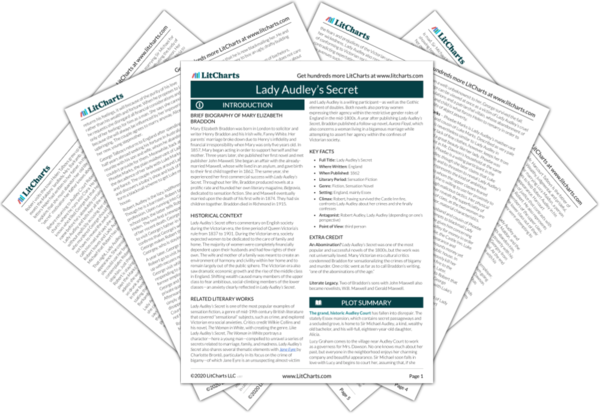Lady Audley has assumed many different identities and appearances throughout the story, but Mrs. Taylor is her final one. Despite all she has done, Robert does not wish to hurt Lady Audley, showing the morality of his character and the mercy present in his form of justice (a mercy that is probably also informed by her gender, class status, and beauty, however).
